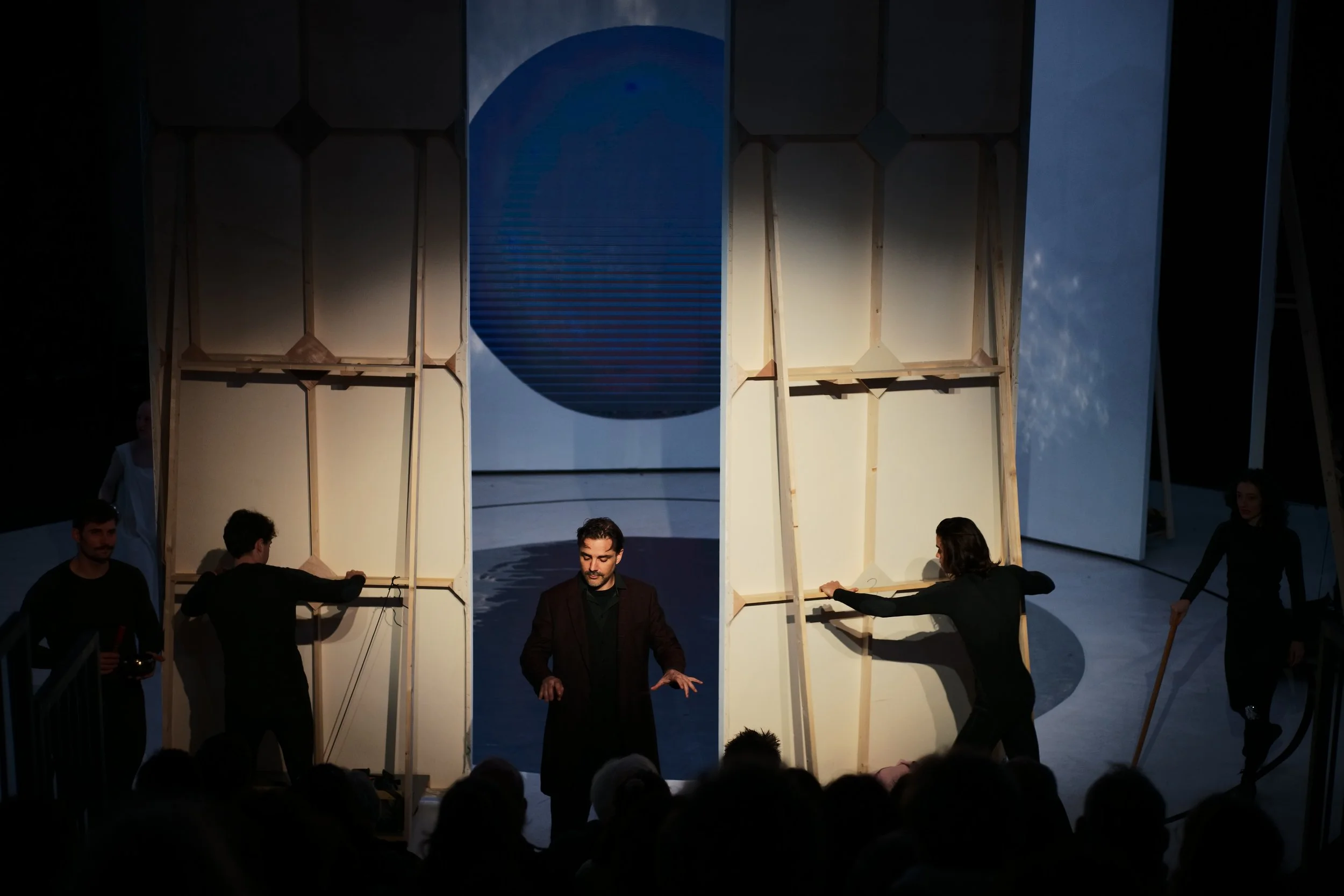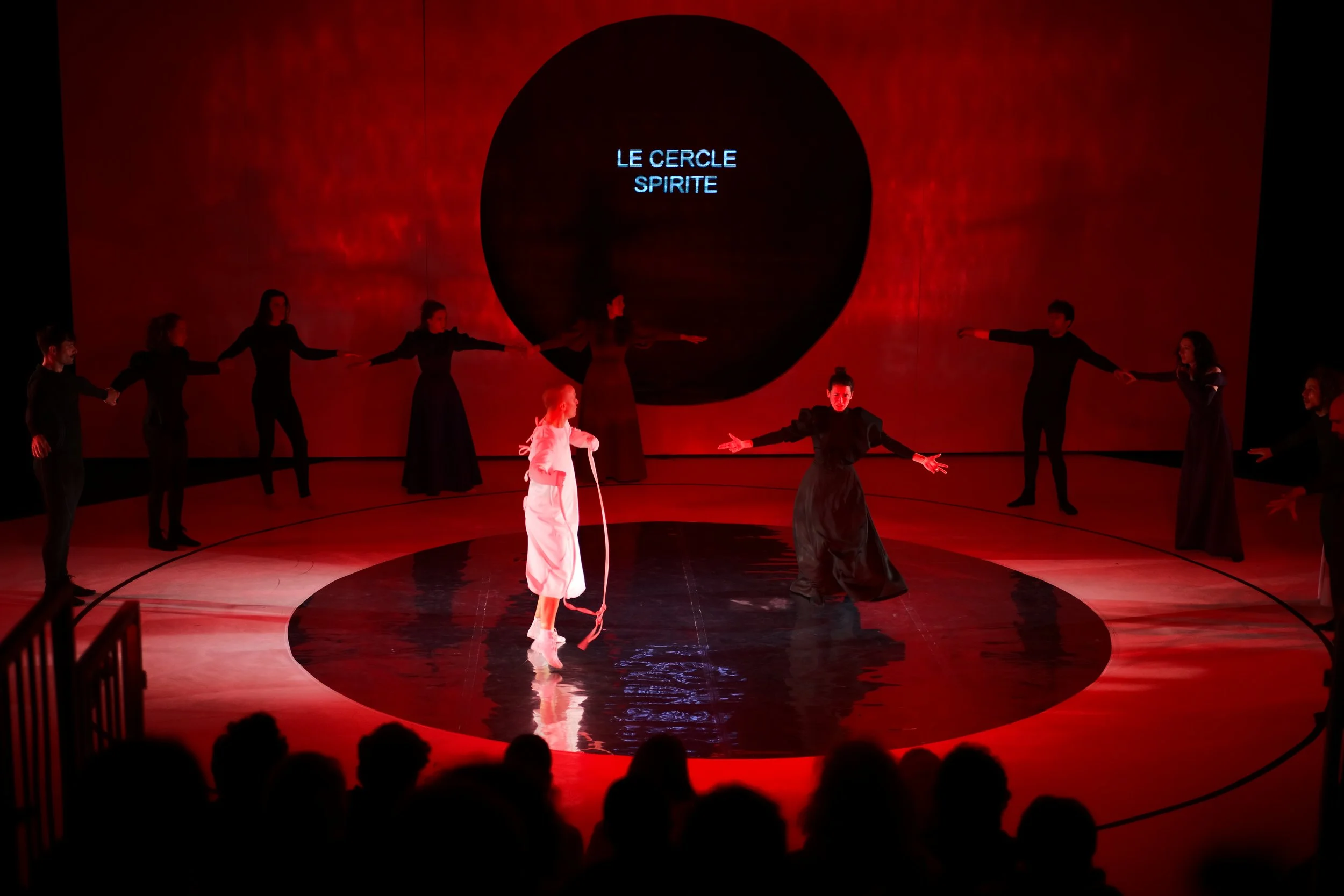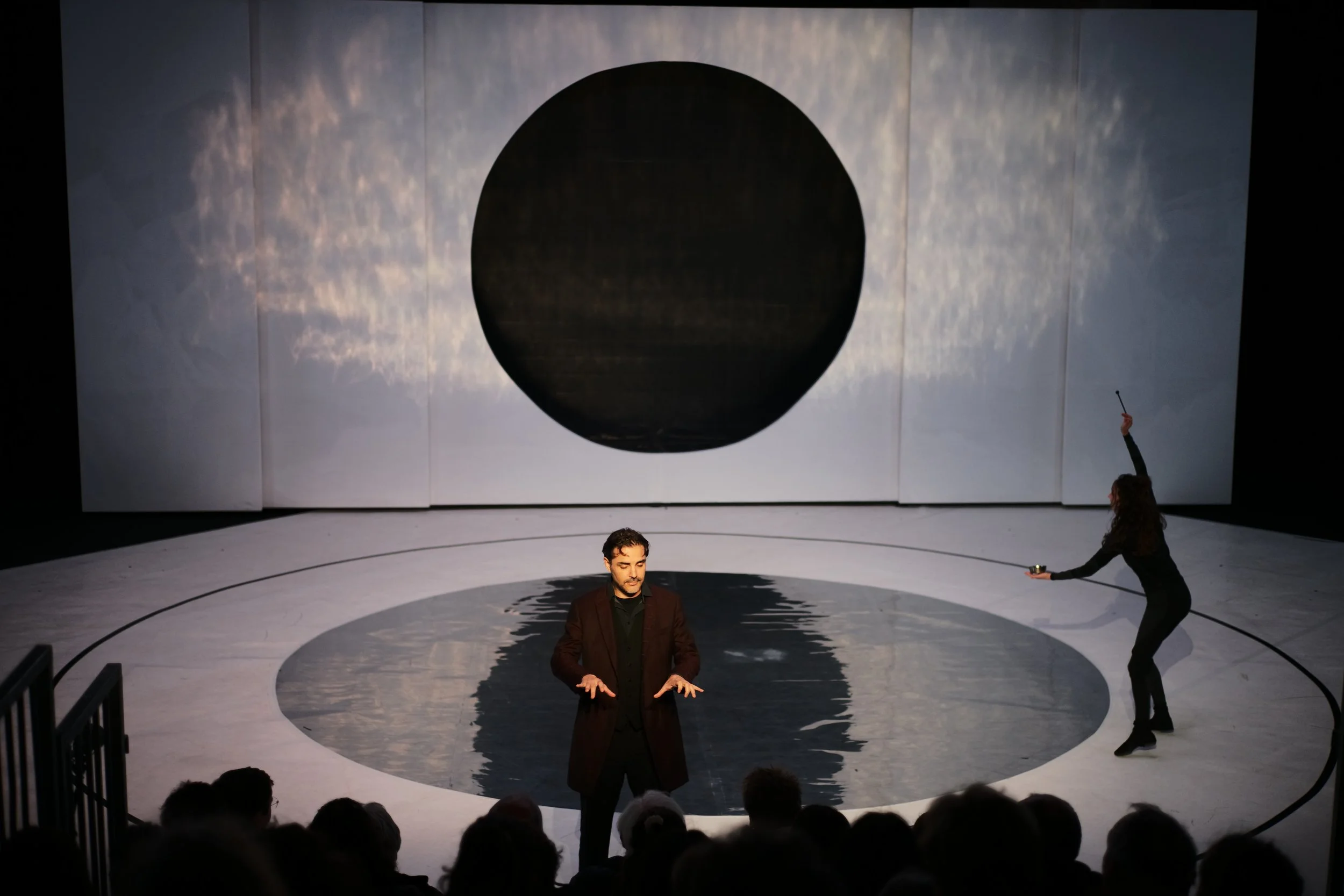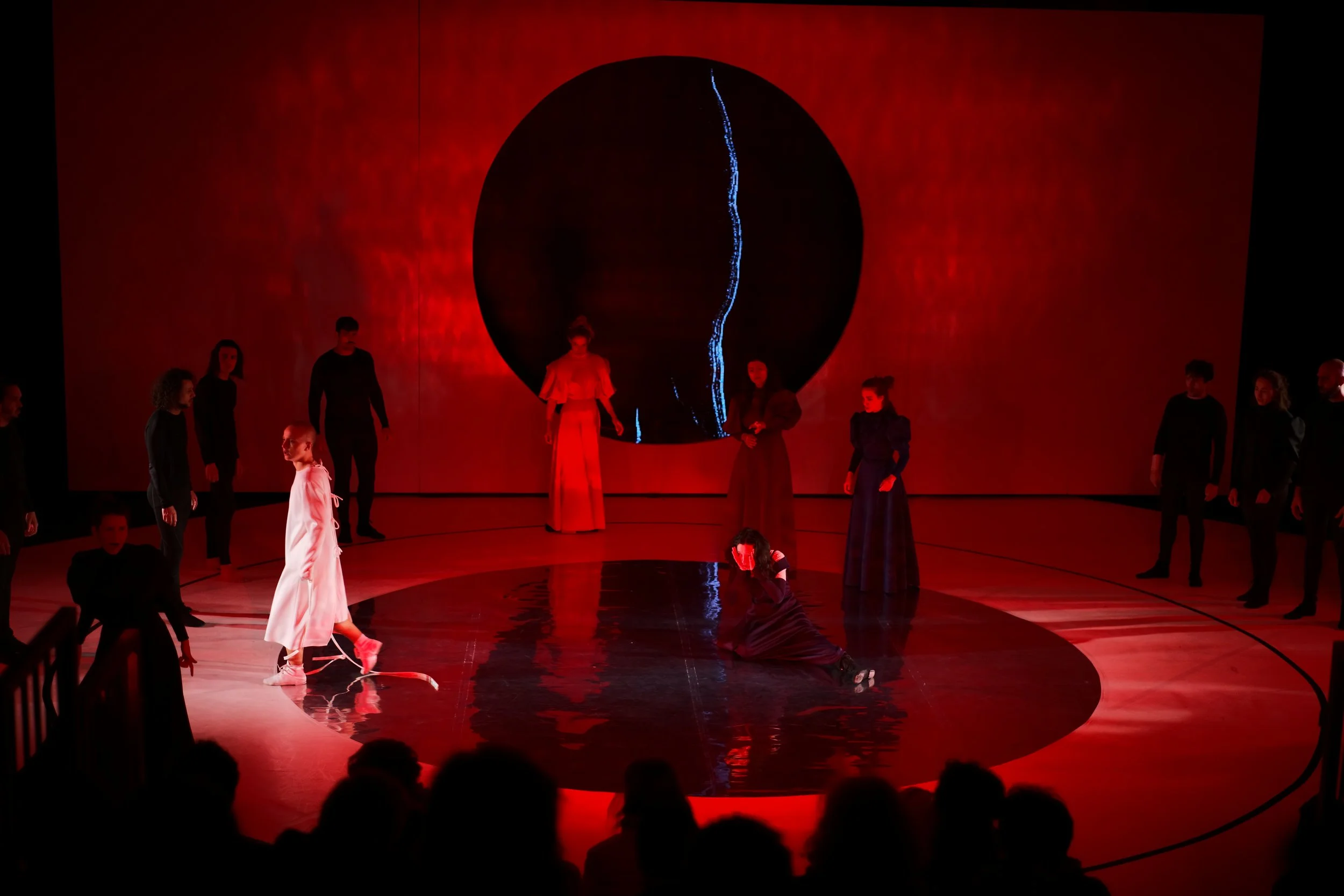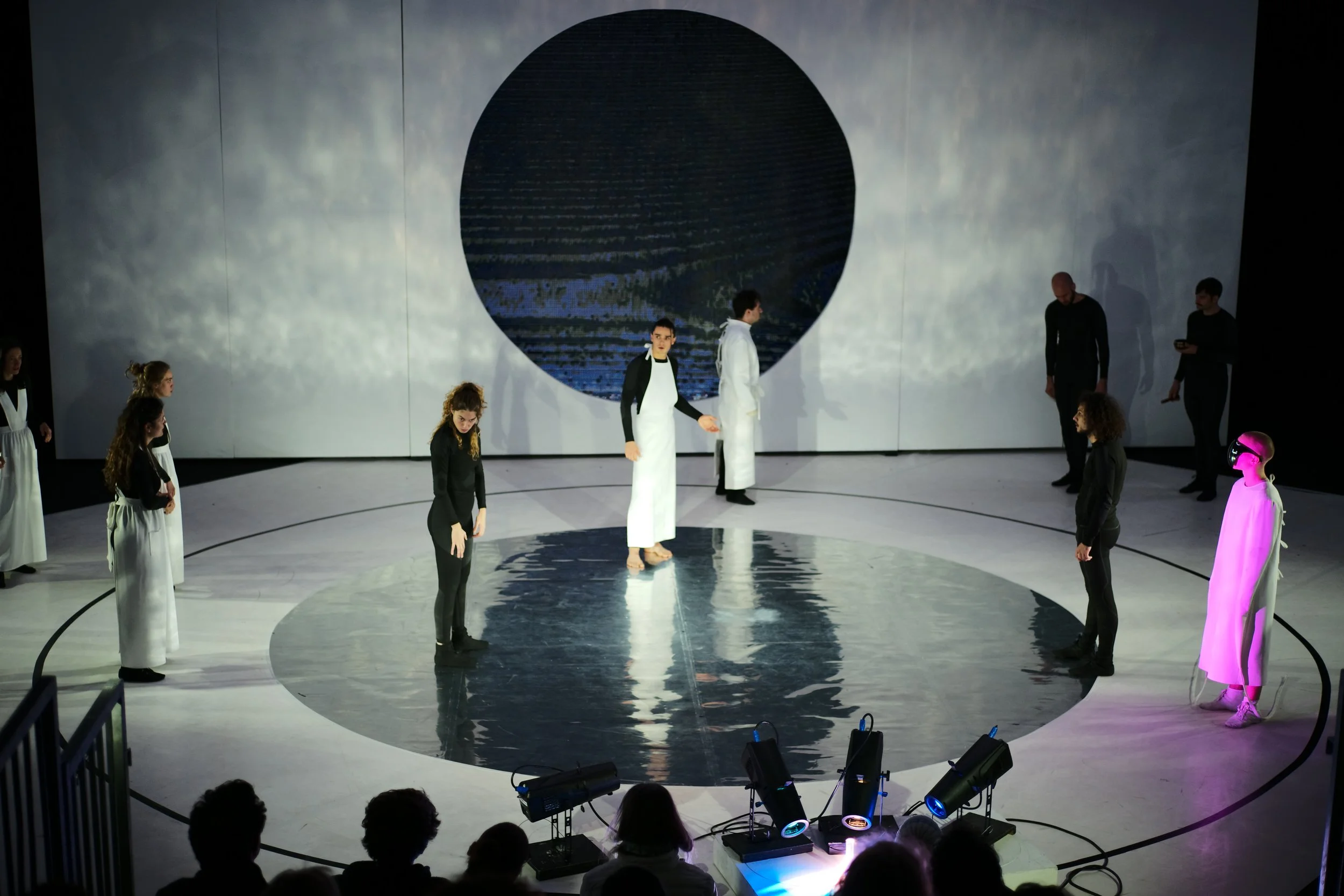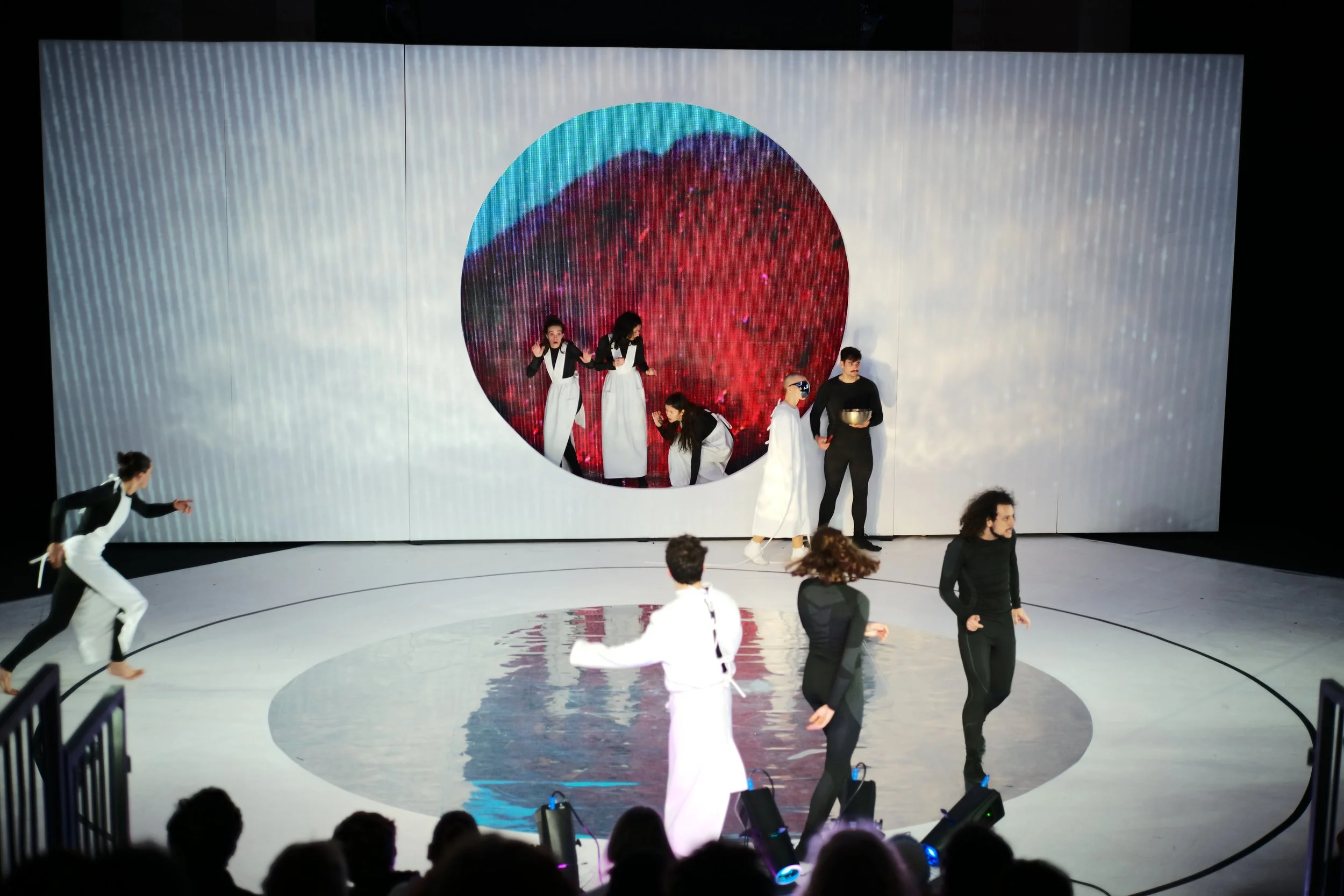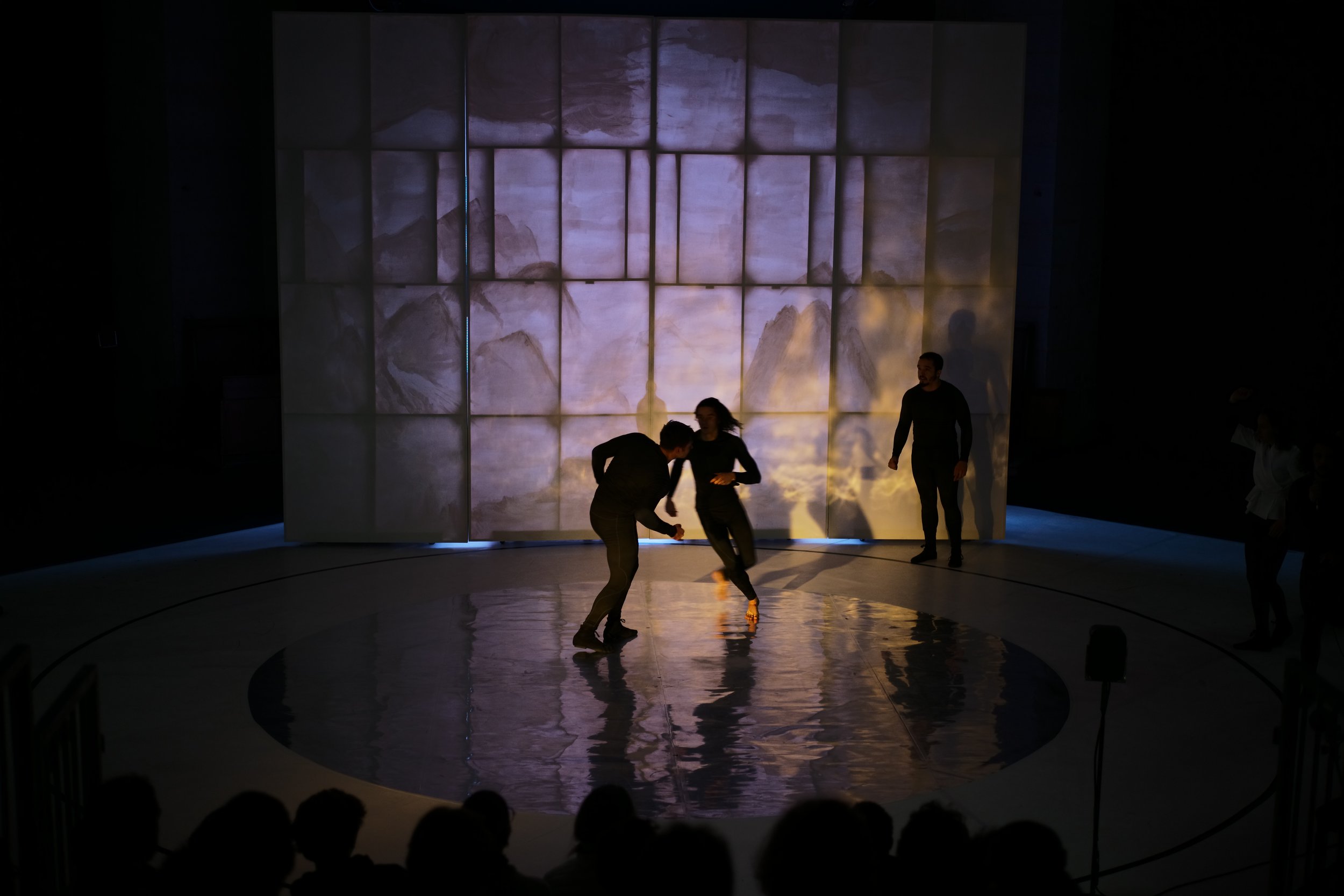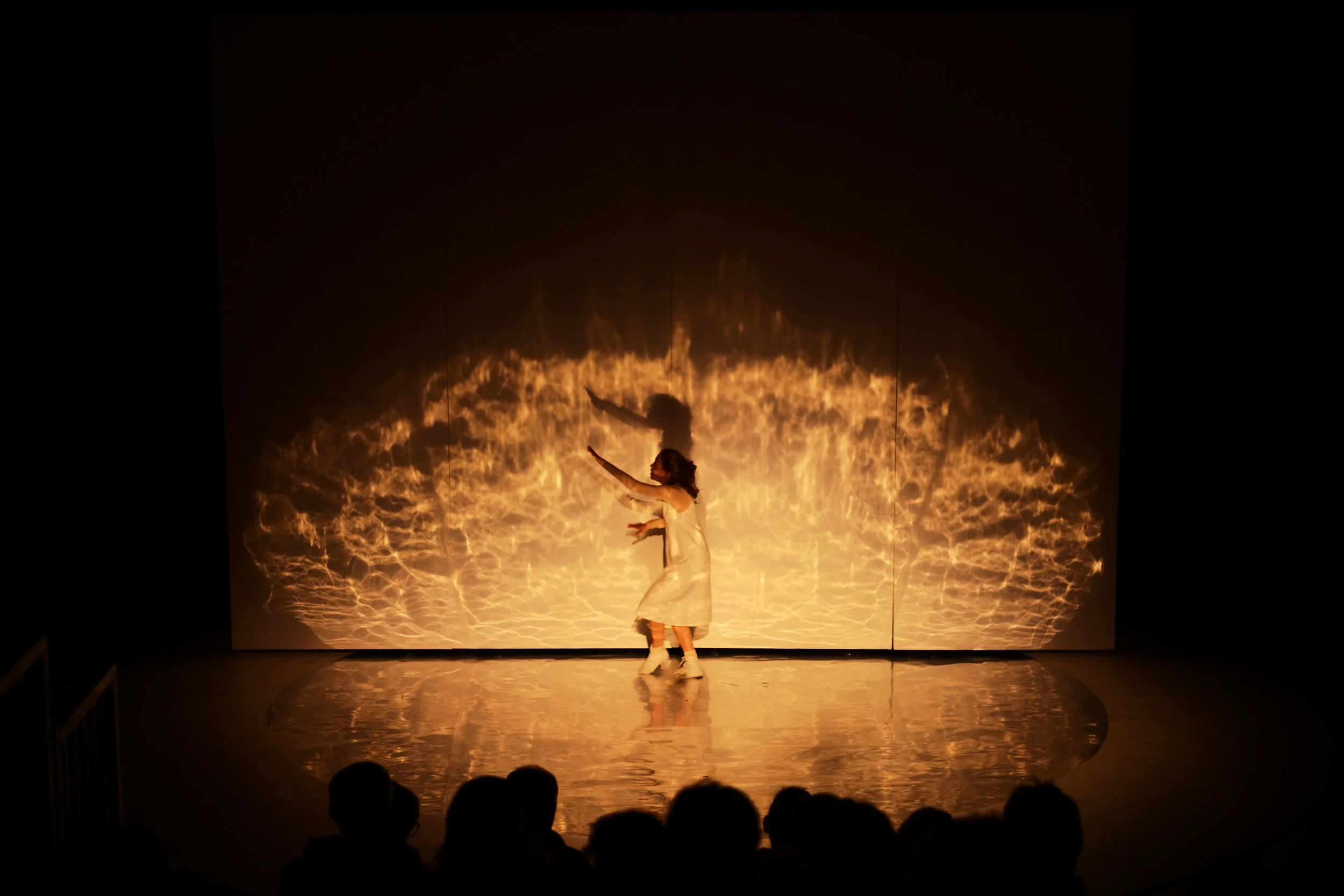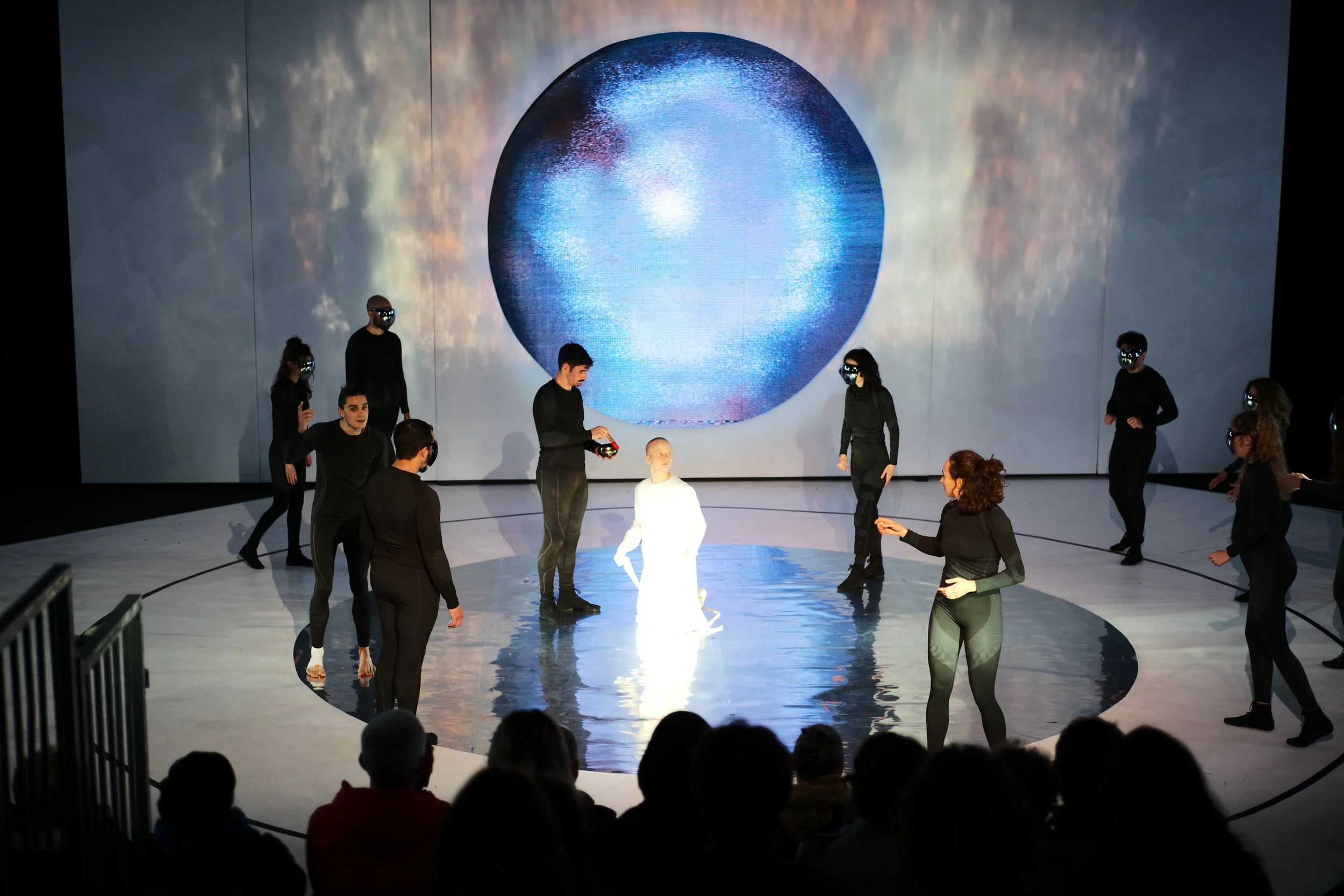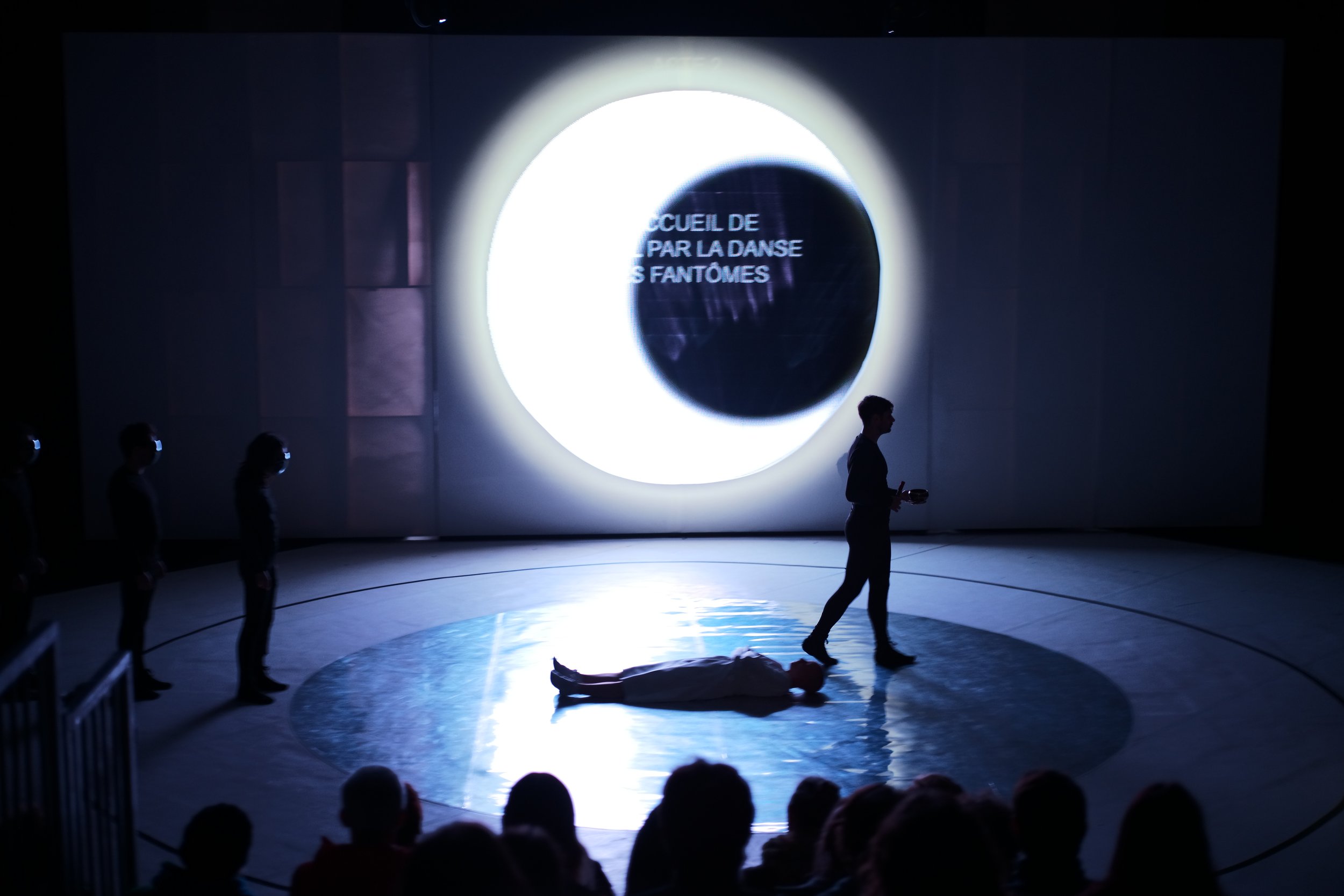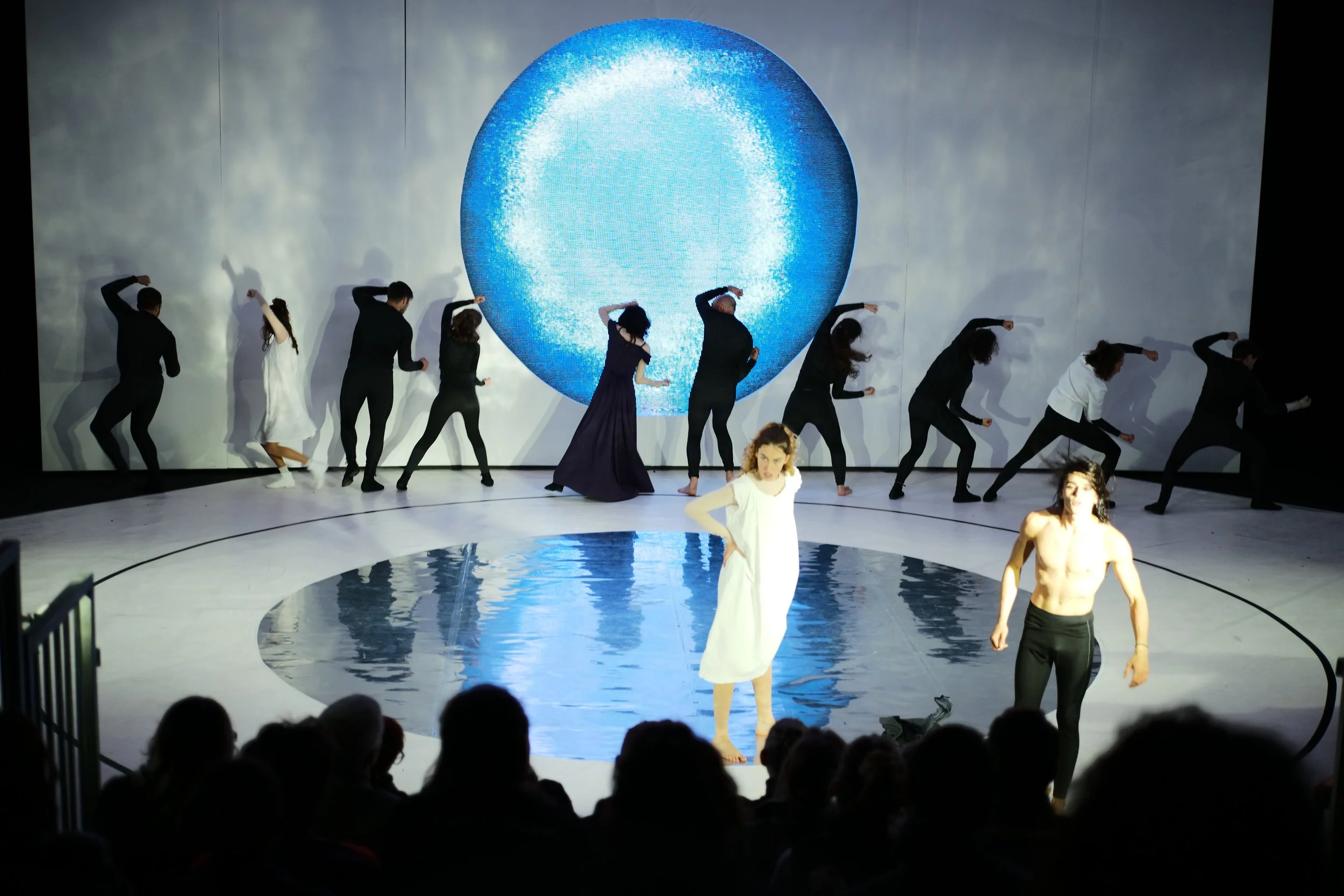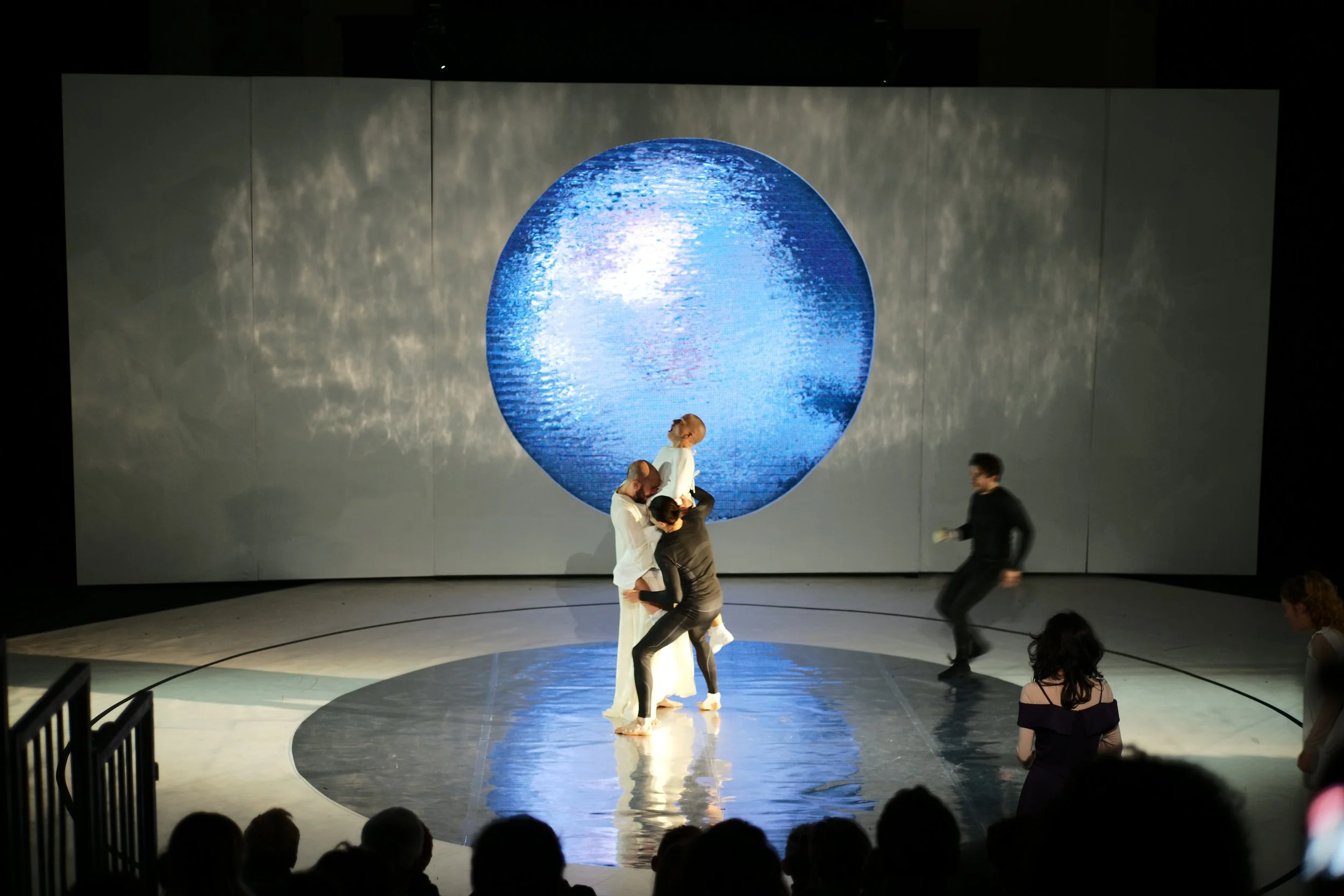Arche
Chapelle Saint-Louis de la Pitié Salpêtrière
Reprendre ARCHE à la Chapelle Saint-Louis de la Pitié-Salpêtrière m’a permis de revisiter un projet où la scénographie et la fiction dialoguent directement avec le lieu. Le texte de Gildas Milin, ancré dans cet espace emblématique, explore ses résonances historiques et symboliques. Dès sa création, la scénographie respectait une logique de réemploi, intégrant des matériaux récupérés et adaptés pour magnifier l’atmosphère unique de la chapelle. Cette reprise a ainsi renforcé l’immersion, plaçant la fiction au cœur même de cet écrin chargé de mémoire.
Revisiting ARCHE at the Chapelle Saint-Louis de la Pitié-Salpêtrière allowed me to reimagine a project where scenography and fiction directly engage with the space. Gildas Milin’s text, deeply anchored in this iconic setting, explores its historical and symbolic resonances. From its inception, the scenography adhered to a principle of reuse, incorporating repurposed materials tailored to enhance the chapel’s unique atmosphere. This revival deepened the immersion, placing the fiction at the very heart of this storied and evocative space.
-
Reprendre ARCHE à la Chapelle Saint-Louis de la Pitié-Salpêtrière m’a permis de revisiter un projet initialement conçu de manière raisonnée, en poursuivant une logique de réemploi et d’adaptation au lieu. Dès sa création, la scénographie d’ARCHE reposait sur une approche respectueuse : seuls quelques éléments avaient été achetés neufs, tandis que le reste provenait de projets antérieurs ou de matériaux en réemploi. Ces principes ont continué à guider mon travail pour cette reprise dans un espace aussi singulier que la chapelle
Pour cette adaptation, je suis parti de la scénographie originale, en cherchant à comprendre comment elle pouvait s’inscrire dans cet espace monumental. L’absence de ceintre dans la chapelle a été un point de départ essentiel pour imaginer une nouvelle structure centrale. En collaboration étroite avec les équipes du Théâtre du Hangar, lieu de la création originale, j’ai réutilisé des matériaux disponibles sur place pour construire cette structure, tout en repensant la disposition des gradins et le rapport entre le public et l’action scénique.
Cette approche a permis de créer un dialogue entre la chapelle, les matériaux réemployés et la scénographie, tout en respectant l’histoire du lieu et les contraintes techniques. La lumière et la vidéo ont été ajustées pour s’intégrer à l’architecture, transformant la chapelle en un acteur à part entière de la pièce.
Ce processus de réinvention a aussi été une exploration de la manière dont le public peut habiter un espace de ce type. Travailler sur la disposition des gradins et la proximité avec les actrices et acteurs a enrichi la relation entre la scène et la salle, créant une expérience plus immersive.
Pour moi, cette reprise a été plus qu’une adaptation : elle a permis de réinterroger la scénographie et la mise en espace à travers le prisme d’un lieu chargé d’histoire. C’est cette interaction entre le projet original, ses matériaux et la spécificité de la chapelle qui a donné à ARCHE une nouvelle dimension, à la fois fidèle à sa conception initiale et renouvelée par son cadre.
-
Revisiting ARCHE at the Chapelle Saint-Louis de la Pitié-Salpêtrière allowed me to reimagine a project initially designed with a reasoned approach, continuing a logic of reuse and site-specific adaptation. From its inception, the scenography of ARCHE was built on a respectful methodology: only a few elements were purchased new, while most came from previous projects or recycled materials. These principles continued to guide my work for this adaptation in such a unique and monumental space as the chapel.
For this adaptation, I began with the original scenography, aiming to understand how it could be integrated into this exceptional architectural environment. The absence of a fly system in the chapel became a key starting point to conceive a new central structure. In close collaboration with the team from the Théâtre du Hangar, where the project was initially created, I repurposed locally available materials to construct this structure while rethinking the seating arrangement and the relationship between the audience and the stage action.
This approach created a dialogue between the chapel, the repurposed materials, and the scenography, respecting the history of the space while addressing its technical constraints. The lighting and video elements were adjusted to seamlessly integrate with the architecture, turning the chapel itself into an active participant in the performance.
This process of reinvention also explored how the audience could inhabit such a space. By working on the seating arrangement and enhancing the proximity between the actors and the spectators, we enriched the relationship between the stage and the audience, creating a more immersive experience.
For me, this adaptation was more than just a redesign; it was an opportunity to reexamine the scenography and spatial dynamics through the lens of a space imbued with history. This interplay between the original project, its materials, and the specific character of the chapel granted ARCHE a renewed dimension that remained faithful to its initial conception while being transformed by its setting.
-
Titre de l’œuvre :Arche ou Arche de l’Hystérie
Année : 2024 (Création et reprise)
Médium : Performance intégrant une scénographie modulaire, lumière, vidéo et son
Matériaux :
• Structures en bois montées sur roulettes (réemploi et adaptabilité)
• Tapis de sol miroir et tapis de danse blanc (réemploi de matériaux)
• Écran LED central (équipement réemployé)
• Dispositifs lumineux (adaptés et issus de réemploi)
• Structure lumineuse octogonale en tubes LED (réemploi, version Chapelle)
• Couvertures de survie comme éléments réfléchissants (version Chapelle)
• Captation vidéo en direct et traitement des images en temps réel (version Chapelle)
Dimensions : Adaptées à deux espaces de représentation distincts : un plateau frontal au Théâtre du Hangar et la Chapelle Saint-Louis à la Pitié-Salpêtrière.
Description :
Arche ou Arche de l’Hystérie est une fiction théâtrale en triptyque qui explore les croisements entre médecine, performance et narration. Sous la direction de Gildas Milin, le spectacle voyage entre les espaces cliniques de la neurologie du XIXe siècle et un futur imaginaire, où les frontières entre arts et sciences deviennent poreuses.
La scénographie conçue par Patrick Laffont de Lojo s’appuie sur des matériaux recyclés et durables pour créer un environnement dynamique et modulaire. Pour la version au Théâtre du Hangar, le design intégrait des structures en bois montées sur roulettes, offrant une flexibilité dans les transitions scéniques, et un tapis de sol miroir doublant visuellement l’espace de jeu. Un écran LED central servait de point d’ancrage narratif, affichant des contenus vidéo en harmonie avec la performance.
Pour la reprise à la Chapelle Saint-Louis, la scénographie a été repensée pour dialoguer avec l’architecture monumentale du lieu. Une structure lumineuse octogonale en tubes LED, suspendue au-dessus des interprètes, introduisait une dimension verticale marquante, enrichie par les couvertures de survie réfléchissantes. La captation et le traitement vidéo en direct permettaient de mêler en temps réel les actions des interprètes à des images projetées, créant ainsi une couche narrative supplémentaire et une dynamique visuelle immersive qui engageait le public dans une perception amplifiée du plateau.
Ces dispositifs traduisent une volonté de créer une scénographie durable et adaptable, qui répond aux enjeux narratifs tout en s’inscrivant dans une esthétique contemporaine et responsable.
Commanditaire : Ensad Montpellier
Production : Ensad Montpellier
Expositions et représentations :
• Création : Théâtre du Hangar, Montpellier (juin 2024)
• Reprise : Chapelle Saint-Louis, Hôpital Pitié-Salpêtrière, Paris (29 octobre – 2 novembre 2024)
Crédits :
• Concept et mise en scène : Gildas Milin
• Scénographie, lumière, vidéo et costumes : Patrick Laffont de Lojo
• Costumes : Nadia Rahmouni
• Musique et arrangements : Dominique Dijoux
• Création son : Alexandre Flory
• Comédiennes et comédiens : Ensemble des diplômé·es de l’Ensad Montpellier
Provenance : Créé pour Ensad Montpellier, adapté pour la Chapelle Saint-Louis.
-
Title of the Artwork:Arche ou Arche de l’Hystérie
Year: 2024 (Creation and reprise)
Medium: Performance integrating modular scenography, light, video, and sound
Materials:
• Structures in wood on casters (reused and adaptable)
• Mirror flooring and white dance mats (reused materials)
• Central LED screen (reused equipment)
• Lighting devices (adapted and reused from prior productions)
• Octagonal light structure in LED tubes (reused materials, Chapelle version)
• Thermal blankets as reflective elements (Chapelle version)
• Live camera feed with real-time image processing (Chapelle version)
Dimensions: Adapted to two distinct performance spaces: a proscenium stage at Théâtre du Hangar and the Chapelle Saint-Louis at Pitié-Salpêtrière.
Description:
Arche ou Arche de l’Hystérie is a theatrical triptych exploring intersections between medicine, performance, and storytelling. Gildas Milin’s text and direction weave a journey from the clinical spaces of 19th-century neurology to a fictional future, where the boundaries between arts and sciences blur.
Patrick Laffont de Lojo’s scenography uses recycled and sustainable materials to create a dynamic and modular environment. For the Théâtre du Hangar version, the design included wooden structures on casters, allowing for fluid scene transitions, and mirror flooring to double the performance space visually. The central LED screen served as a narrative anchor, displaying video content in harmony with the performance.
For the reprise at the Chapelle Saint-Louis, the scenography was reimagined to highlight the monumental architecture of the space. An octagonal light structure made from LED tubes, suspended above the performers, created a striking vertical dimension, complemented by thermal blankets that played with light reflections. Real-time video processing, capturing live elements of the performance, added a layer of immediacy and interaction.
Both versions emphasized sustainable scenography and adaptable materials, bridging the historical and fictional aspects of the narrative.
Commissioned by: Ensad Montpellier
Production: Ensad Montpellier
Exhibitions and Performances:
• Creation: Théâtre du Hangar, Montpellier (June 2024)
• Reprise: Chapelle Saint-Louis, Hôpital Pitié-Salpêtrière, Paris (October 29 – November 2, 2024)
Credits:
• Concept and direction: Gildas Milin
• Scenography, lighting, video, and costume collaboration: Patrick Laffont de Lojo
• Costumes: Nadia Rahmouni
• Music and arrangements: Dominique Dijoux
• Sound creation: Alexandre Flory
• Actors and performers: Ensemble cast of Ensad Montpellier graduates
Provenance: Designed and realized for Ensad Montpellier, adapted for the Chapelle Saint-Louis.

